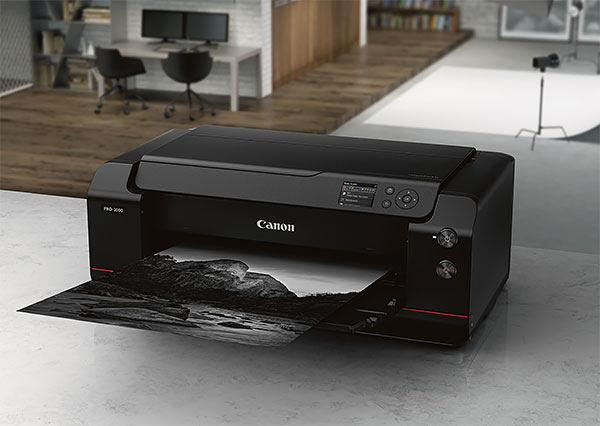Canon USA’s President and COO Kevin Ogawa talks mirrorless and strategy, as the EOS-R hits the market
posted Friday, October 12, 2018 at 4:13 PM EDT

The last 6 weeks or so have been pretty hectic, given the blistering pace of new-product announcements and the Photokina show, so I'm only now managing to share an in-depth conversation I had with Kazuto (Kevin) Ogawa, named as Canon USA's President and COO back in April. I spoke with him on the day of Canon's long-awaited EOS-R announcement, so was particularly eager to hear his thoughts on Canon's mirrorless strategy, but also on his strategic plan for Canon USA as a whole. As a result, this interview ranges a bit further afield than many I've done, as I wanted to understand how photography in general fit into Canon's strategic plans for the company as a whole.
We covered a lot of ground, so read on for all the details!
Dave Etchells/Imaging Resource: First, congratulations; this is a big, big event! The Canon EOS R looks very impressive and interesting, I think. You had copies of my questions before, but we didn't know what we were going to be seeing, so I couldn't really formulate questions too specifically. So I'll be including a couple that weren't on the original list.
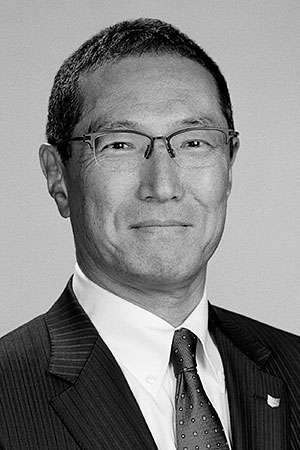
President and Chief Operating Officer
Canon USA Inc.
Managing Executive Officer
Canon Inc.
Kazuto Ogawa/Canon: No problem, you can freely ask me any questions.
DE: Now that we've seen the EOS R, we're kind of wondering who the specific audience is for it, in that it's not at the high-end like the 5D Mark IV or a 1D X Mark II, but it's a lot more than a 6D II or an 80D. Where do you see the market for it, and how are you bringing it to that market?
KO: Of course, customers can always choose the best products, but we don't categorize them, saying "Okay, this camera is this market, this camera is this kind of market." We don't say that kind of thing. But judging from the specification and the current EOS line, more or less, the 5D, 6D, or the 80D; a similar position to that. So higher-end enthusiasts, or as a backup camera for professionals, that kind of category. 5D Mark IV, 6D, these are the full-frame cameras, right? The positioning of them.
DE: Yeah, and of course with mirrorless, you pick up silent shooting and that sort of thing, which would be important for wedding photographers, photojournalists, that sort of thing?
KO: Yes.
DE: So this is more or less a mid-range solution, currently. Where do you go from here? Is it most important to evolve it towards the higher-end professional, or is it a case of working to bring the cost down for a broader market? What is your strategy?

KO: Well, I cannot share future product plans, however basically our strategy is a "full lineup" strategy. So [covering] from entry level to the professionals, regardless of the format. Digital SLR or mirrorless, and even digital compact cameras. Also, we have the EOS M series. Each group of technologies or products itself has an advantage. So a "full lineup" strategy means to fulfill the entire requirement from the customers. Therefore, with digital SLRs, you have the expertise; advantages and disadvantages: Mirrorless has advantages and disadvantages. Digital compact cameras as well, you know, they all have advantages and disadvantages. How we put the priority for the specifications, that is the key.
So still, at the top, at the high end, most of the professionals prefer the current digital SLR, for example the 1D-series. There are tons of lenses for the Canon EF [mount]. The 7D-series is also popular. The professionals don't care so much about the weight, they don't care about the size sometimes, but even those professionals, they may need a lighter lens. For instance, at this time, we're launching the 400mm and 600mm. [Ed. Note: The new 400 and 600mm super-teles are much lighter than their predecessors.] So based on those kinds of requirements, we can provide such products. So that is our full-range and full-lineup strategy, that is the meaning.
Our mission or responsibility is to provide an entire series of product, selecting the best technologies for each of them. So in that sense, OK, the digital SLR, we're going to continue to develop. Mirrorless R-series and the new RF-mount, we're going to continue to develop, even the M-series. Also the lenses, and so on and so forth. Our camera products, even the movie functionalities, that is the brand ambassador. So we continuously strengthen the brand. And now yesterday we launched the R-series, and that has leading edge technologies too.
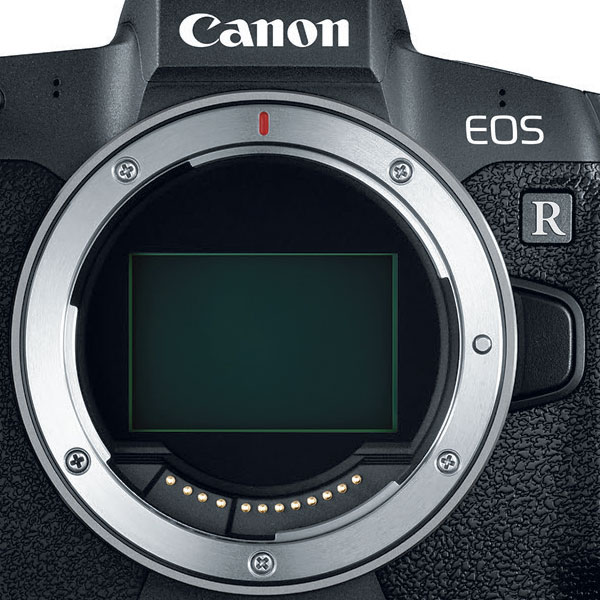
DE: So as kind of an extension of that, you have the full-line philosophy or the goal strategy. How do you see mirrorless playing out within that for the next few years? And especially, given that the competition is so active. Sony has been there for a while; now Nikon has come in. What can you say about your strategy with the R-series, specifically competing with those companies?
KO: Thanks to [our] competitors, the word "mirrorless" currently makes a bigger noise than ever. That is good news, because everybody, the consumers generally, are paying more attention to the camera industry, right? So that is a good thing. So Nikon, Sony, Canon, Fuji, Olympus, all the major players, they have all launched mirrorless cameras. Most general consumers may not understand about mirrorless vs SLR or vs compact, just that a camera is a camera. But [all the talk about mirrorless] makes noise, it means consumers are paying more attention to the camera industry than ever.
Also, as a basic fact, thanks to the smartphone, the number and also the frequency of shots is tremendously higher, compared to more than ten years ago. Maybe 100 times or 1,000 times more. Because everybody, you know, they are all trying to shoot various lifestyle, food, travel photos, so on and so forth. So the variety of applications, and also the requirement [is expanding]. So that is why we're taking the full lineup strategy. So it's now the generation Y and Z [who are getting involved], also the bloggers and the webcasters and so on and so forth. So what kind of products, what kind of technology should we provide? That's why we're trying to bridge the gap between our technologies and the requirements.
So in that sense, mirrorless is one of the new topics among users; you know, that is the good news, to stimulate demand of shooting stills or video, on both sides, that is the good news for us. So again and again, we're going to continuously invest and commit to developing the full range of the cameras from Canon. Also, as I mentioned yesterday, this is not the last model, as you are aware. [Ed. Note: Ogawa-san is referring here to comments he made the day before, that there will eventually be a complete line of full-frame mirrorless cameras.] So we are continuously innovating in this area, with new lenses and cameras - but please don't get me wrong, the DSLR area is also where we're going to commit.
DE: So having this new mirrorless line, you're going to be working aggressively to develop that, but that doesn't mean you're backing away from DSLR development any.
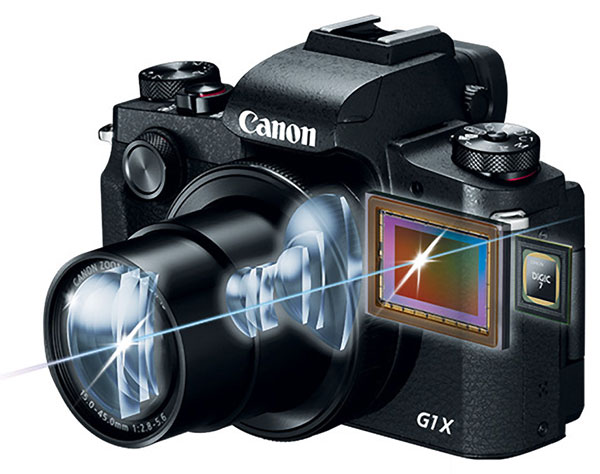
KO: Even compact cameras, too. Some of the manufacturers are getting away from the digital compact area, but we're going to continue. Actually, we really enjoy the compact camera business. Now, you know, the market share is getting bigger and bigger.
DE: Yeah, advanced compacts are advancing again. The low-end compacts all went away, but now the higher-end compact are coming back, yeah.
KO: Yes. Sometimes even the professionals, they are using the compacts [even though they also own] full-frame cameras. So that is kind of the requirement we can fulfill.
DE: I guess paraphrasing then, your overall competitive strategy compared to Nikon or Sony is the full line. Sony has sub-frame models and they have a wide range of full-frame cameras, but they don't seem to be focusing too much on their sub-frame bodies. And of course, Nikon just has the single full-frame mirrorless model now with a second one to come.
Switching topics slightly, I'm kind of curious, because you've worked around the world, and you ran China for a while. I'm thinking that the different markets must be very, very different. How is the US market different from other places in the world, and what do you see as the things you need to define or address for the US market, as you lead Canon into mirrorless?
KO: So depending on the region, of course the market characteristics are slightly different, but for us, even for me, the most important thing is to delight the customers. "Delighting the customers" is easy to say, but difficult to do. But Canon is a technological company, we have tons of technologies. Even in the potential [Ed. Note: Meaning as-yet-undeveloped?] technologies, we are trying to commit a certain amount of money for the investment. Roughly 9% of global revenue goes to the R&D area. In that sense, the camera, or even the camcorder, that is the "brand ambassador" of Canon. So we are going to continuously strengthen this area.
So the customer focus, delighting the customer, that is borderless. [Ed. Note: Meaning that it's the same mission, around the world.] But sometimes, for example in China, even the younger generation is purchasing the 5D Mark IV. That's a very unique market. Then compared to China, the US might be more entry-driven, rather than the high-end or midrange.
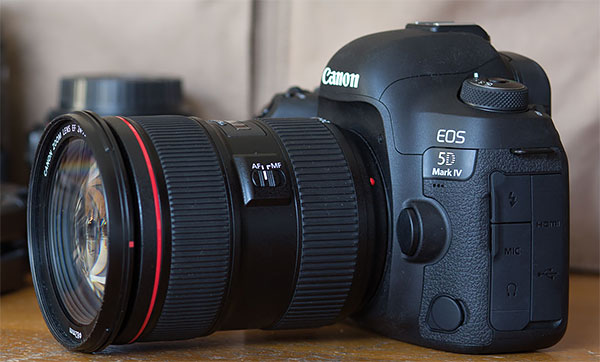
DE: That's interesting; so in China, with younger people, the higher-end is actually leading.
KO: Yes, you know, the super-rich people are rich! <laughs> That's the same in the US, but in China even the teenagers are purchasing the 5D Mark IV as a first camera.
DE: Wow!
KO: So that's why we need to train them. Also, here, the US, with the spreading out of the smartphones, that is another opportunity because the [number of photos being taken] is much bigger than before. So these are the potential customers. Most of the general consumers, Gen Y, Z and millennials, these are the people who instantly take a photo with a smartphone. That is the potential customer for us. So how can we generate more attention for the cameras, with those who are using the smartphone only? We need to educate or train them to enjoy the beauty of photos, or the beauty of movies, and so on and so forth. It used to be just a wedding, party, or the commemorative event. [Or even with] travel, that is only a limited occasion to take a photo. But nowadays, even the glass of Coca-Cola, or the cake, or food, and so on and so forth [is a chance to take a picture], right? So that's why they're now keen to know the camera. Huge potential! So our mission is how to cultivate that potential customer based upon our full-lineup strategy. So regardless of the technologies, Canon can provide the best or most suitable technologies or products to attract people.
DE: So it sounds like there's a lot of focus... I've heard this before from Canon, a lot of focus on growing the market or trying to draw in people that aren't really engaged photographers yet. That can be very difficult or very expensive, trying to find those people and then, it can be a low conversion rate, to go from first contact with your brand, to someone buying a camera...
KO: So the A-1 as you know used to be so advanced it's simple. [Ed. note: The A-1 was the first SLR to have the PASM exposure modes we take for granted today, a major advance in usability when it was introduced in 1978.] That's why that camera could make everybody a photographer. It's the same thing nowadays thanks to the smartphone; everybody is a photographer. But among them, half of the people aren't satisfied with the quality of the pictures. So, OK, the EOS R, EOS 5D, whichever you choose, that's much better picture quality or movie functionality.
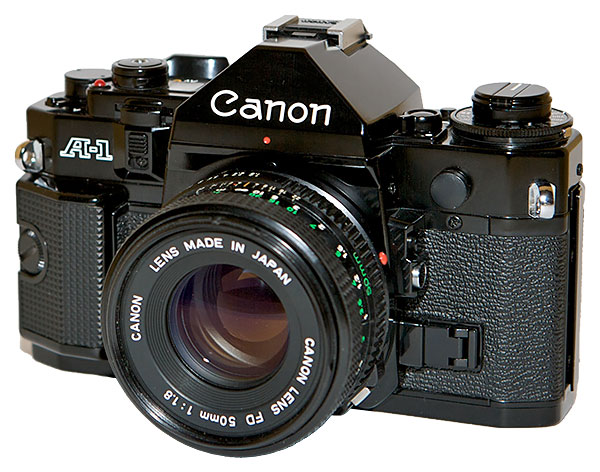
Image courtesy of Benjamin.nagel/Wikipedia, used under a CC BY-SA-3.0 license.
DE: Yeah, I call smartphone photography almost disposable photography, because it's something you shoot, it's part of experiencing the moment, but it's not part of remembering the moment later, the way...
KO: But sometimes there can be kind of a competition, OK, you took the better picture, you took the worse!
DE: Yeah, yeah.
KO: OK, I used the EOS R. Much better then!
DE: Yeah. I've heard so many stories about everyone's got their phone and then one person has the actual camera, everyone ends up asking them for copies their pictures. So somehow as a manufacturer, as Canon, you need to bring that to the fore more.
KO: Yeah.
DE: This is very far in the future, and you probably can't answer it to some extent, but my question is will mirrorless ever replace DSLRs that have separate AF and exposure sensors?
KO: Generally speaking, overall the camera industry is flat or shrinking a little bit. The mirrorless portion itself is growing. This is because the profile of a customer, compared to a long time ago, is [also] changing. Like the life-story tellers, lifestyle tellers, cultural story tellers, and so on and so forth. Use it more like a "fast photo". Usually, traditional photos are the "slow photos". It used to be that we focused on the slow photo, but now the fast photo is the majority of photography or movies. But our products can stimulate the demand, regardless of the overall camera industry. That's why there is the potential for growth for our business. So in general, maybe overall the picture of the market is flat, but mirrorless might be slightly growing, so that portion might be getting bigger.

DE: Yeah, mirrorless is the growing part. If the industry as a whole is flat or down slightly then a higher and higher percentage will be mirrorless. I'm curious myself, I don't know the answer, but as that trend continues, and technology continues to improve with mirrorless, maybe some day there won't be a need to have a DSLR? I mean right now, specifically with the EOS-R, the 5D Mark IV and 1D X II autofocus systems are much more capable. But as technology evolves, maybe mirrorless autofocus becomes as good as anyone needs.
KO: Both sides have advantages and disadvantages. Right? So optical viewfinder, some people love such functionality rather than electronic viewfinders. That is one area. But mirrorless is more compact than the DSLR, but also some people may not care about the size of the camera. There is more functionality in the body, so in a sense, you know, mechanically speaking the DSLR has a good advantage. Also, the battery life itself in general, mirrorless battery life is shorter and the DSLR is longer. So what is the priority of the products, what is the priority of the customer needs? We are counting on the customers [to tell us] which way we should take.
DE: So you'll be looking to see how that evolves and that'll guide your new products.
KO: That's why we are going to continuously invest in research, even for the digital SLR, and also for the mirrorless R series as well. So on both sides, we're going to continue to develop the lenses and the bodies and so on. Although I cannot share our concrete product plans.
DE: This is not on my notes, but just by way of making an observation, you've developed many EF lenses over the years. There are millions out there and many, many different models. And then when you went into cinema, you made a huge investment for cinema lenses. So thinking in terms of what your optical engineering capacity is like, first it was focused on EF and then a lot of that design went into cinema, and now you have this new line to build out. So probably, it would make sense to me to invest a lot more development, to have a lot more models coming in the R-series than additional EF. But on the other hand EF is so mature, and you have a lot of excellent products there already, so perhaps it doesn't need as much development?

KO: As I said, the full lineup strategy remains unchanged. Therefore depending on the customer requirement, we are strengthening the product lineup. So that is the comment from my side. Also since I joined Canon 37 years ago, even for such a long time, Canon always keeps the policy for R&D [budget] at around 9% of global revenue going to R&D. So we never changed that idea. Tons of investment [is going to] the R&D area to fulfill the product line.
DE: Yeah, yeah. That's really key.
KO: Yes. That never changed.
DE: Yeah. I remember years ago, a friend of mine was being trained as an executive by IBM and they had them do business simulations. You could choose how much money to invest where, and so he and his team decided "OK, we're just going to put everything into R&D." In the simulation, they lagged a little and then they beat everybody hands down, because they had developed more technology. And I know that that policy has been very consistent for Canon. I remember many years... 15 years ago, maybe? I first heard Mr. Mitarai talk about the importance of R&D investment.
KO: Yes, definitely. Its is remaining unchanged. [It's the] same thing even now.
DE: So I've been talking about cameras and lenses a lot, but you have many other product lines, and photo printers have always been a strong product line for Canon for many years. How do you see that going? My sense is that the print market is stagnant, or has declined. What do you see happening with printers, in general? Just the photo printers; I'll get to large-format in a moment.
KO: [Here] also we have a growth strategy for these areas. As I said last night in the speech, we are the only company who has both output and input. So particularly for the photo category, we must win the game in this area. Not only for the photo, but also the CAD printing.
DE: CAD printing, yes, really large printing.
KO: Large-format printers. So we have inkjet technologies and also the copier technologies, ways of handling the paper and so on and so forth. We have the synergy of technology to suit the large-format printers. So now we're continuously gaining the market share in the photo area. So that is our concrete, clear strategy. For photo, we must win the game.
DE: And you say that your photo printer business is currently growing? I know you've always done well in advertising on our site, it seems that photo enthusiasts are definitely interested in buying printers.
KO: Also, the so-called red-line printers, the Pro series, that is almost the same design [language as] the EOS lens, right?
DE: Yes, you've picked up that little design language there. [Ed. Note: Canon's high-end L-series lenses are marked by a red ring around the lens barrel. Canon picked up on this same design language in their high-end imagePROGRAF PRO printers.]
KO: So that is our message.
DE: And it seems like -- and again, I'm not sure if this will be particularly interesting to our readers -- but in the large-format arena, it seems like Canon's done a tremendous amount on that recently. Not just large-format, but high-volume print-on-demand. So is that a strongly-growing area now?
KO: Yes, like a DreamLabo, also in the coming years we're going to launch Voyager, that is a kind of big photo print machine that we exhibited at the German DRUPA show. So that is also a growth strategy for us. So wide-format printers, pro printers, that is with the photo printers we are continuously strengthening this area. But photo printing service itself, such as the HD photo album business, this is another potentiality. So DreamLabo is one of the messages, and Voyager is another message.
Melissa Moritz/Canon: Did you go to that launch event, for DreamLabo?
DE: I don't think it was the launch event, no. My awareness of Canon's high-volume photo-printing and print on demand has just been what I've seen at the Canon Expos. Each time it seems like it gets bigger and bigger and more. And the print-on-demand machines, wow, what I saw even at Canon Expo 2015 was pretty amazing.
KO: So globally, we're growing the DreamLabo printer.

DE: So DreamLabo is oriented more towards like, up to A4 size or something, whereas the Voyager is much larger-format, but also a high-resolution photographic process.
KO: Yes, yes. Also, Voyager doesn't require specific papers. It will print on a variety of materials.
DE: It can print on many different kinds of things, yes... This is getting even further afield from the photographic imaging, but a few years back you acquired a very large security camera company.
KO: Ah yes, Axis.
DE: Yeah, I think that might have been the last Canon Expo that there was a lot of information there on that.
KO: 2015.
DE: Yeah, yeah. And wow, the technology they had really blew me away, the monitoring and tracking and everything. [Ed. note: Axis' technology was both amazing and a little scary; I'd previously had no idea of the extent to which security cameras and advanced software could identify and track people.] But are there any ways in which your work in that market helps your position in the photo imaging area? Is there technology which crosses from security cameras back into photographic cameras? It might be the other way or there might be no connection between the two, I don't know.
KO: Right. So we have what we call the four pillars strategies for future growth. The first one is commercial printing. That's why we acquired Océ, which is a Dutch company. So continuous feed printers, or even the big machines, even cut-sheet, that is a growing market so we really enjoyed the business since we acquired that company. That's pillar one. Pillar two is security cameras; [there we have] Axis (the camera maker) and Milestone (the software company). That is also a growing market, because now security is key, regardless of the country [but] particularly for the US. So with Océ in printing technology, we can synergize them within Canon. Also with Axis and seurity cameras, the camera is an imaging device, so that is very familiar within Canon. That's why that is a key growth area for us. Then the third pillar is medical. We acquired Toshiba Medical [and we are in] mainly X-ray, CT or MRI. That is an imaging business also, right? So health-consciousness, regardless of the country, that's also a growing market. We are familiar with imaging, and that's a growing end of the market, so we decided to invest. That is the third pillar. The fourth pillar is the industrial area. [Ed. Note: Condensing a little back and forth here, Ogawa-san said that Canon's camera business was a major portfolio within Canon in the business-to-consumer (B2C) arena. They felt that they could increase their business-to-business (B2B) activity beyond what they had already been doing with copiers, so that's why they broadened out into semiconductor and flat-panel display production equipment.]
DE: Oh, flat-panel displays, yeah.
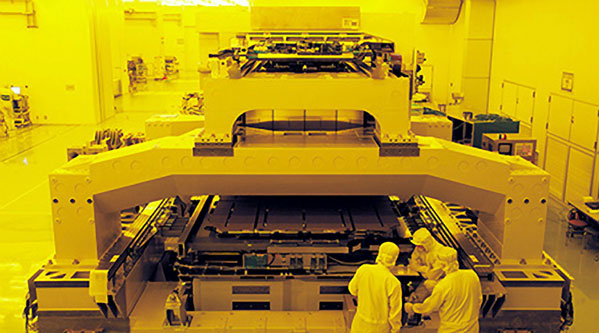
KO: Yes, panel production machines. We don't produce any of the flat screens...
DE: Ah, not the screens themselves, but you make the enormous exposure systems that I've seen photos of, yes. [Ed. Note: The systems that do the photolithography to create the display panels for modern big-screen TVs are absolutely enormous. Canon's eighth-generation FPD lithography system, currently their largest, measures 9 meters wide, 11.6 meters long, 5.8 meters high and weighs in at a svelte 100 tons, with a 1-ton moving mask stage and a 4-ton substrate stage. Yet despite the size and weight, each can accelerate to about 1m/s in half a second, then stop again in 0.2 seconds. Wow!]
KO: Yes, huge. So that is the fourth pillar. Our overall growth strategy is these four. But the existing business like cameras, like the EOS R, we are committed to these industries, too. This is a proportion that is much bigger than the new business.
DE: Oh, so the photography is still much bigger than medical or some of these other businesses now? Interesting. It was more than ten years ago at a Canon Expo that Mr. Mitarai announced a strategic plan to use imaging technology to go into medical. My sense was that's only been modestly successful, that it's taken a lot of investment, but it's not returning a whole lot yet. [Ed. Note: Canon Expos are essentially single-company trade shows held every five years to showcase all the areas and technologies that Canon is involved in. I attended the Expos in 2005, 2010 and 2015. I think it was the Expo in 2005 when Canon's (legendary) Chairman Fuji Mitarai first set out the long-term strategy to leverage Canon's imaging technology in the medical arena.]
KO: It takes some time, but we've had many positive news throughout these businesses in the fourth pillar.
DE: So you say you're seeing positive returns from that now, yeah.
KO: Yep.
DE: That's good. My sense, though, was that about the time that that heavy investment in medical happened, the R&D in photography diminished some. I feel that's returning some now, and that we're seeing more development. But it seems that for a while, photo-area R&D languished a little.
KO: Based upon the 9% investment of overall revenue, that is the policy. That has not changed. So acquisitions like Toshiba Medical -- now called Canon Medical -- they have a separate R&D team. So in that sense, the medical R&D team doesn't touch our existing R&D. However, imaging is the technology in common, so we try to make the synergy between the medical and the rest, right? X-Ray and that kind of imaging, CT imaging, [there are] cameras and lenses inside the medical equipment. Why shouldn't they work together? So that's why coming back to your other question, there is no need to sacrifice any resources. Instead we should synergize both. That makes sense.
DE: Yes, I understand, there's definitely synergy there, and the common strategy is to leverage what you know in these areas to expand.
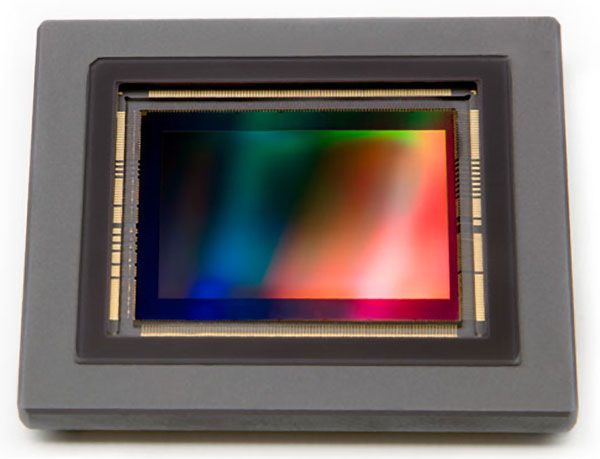
KO: Even the sensor itself, the CMOS sensor, can be utilized by medical area. Likewise the lens.
DE: Yes. While you say they're largely independent, though, when you've acquired a company but then you want to make it grow, it seems like perhaps 9% of their existing revenue isn't enough to make them grow. You may need to take some of the that 9% of the overall revenue, to fund them strategically, I would think. But it's good to hear that you are seeing returns now, and that area's building.
KO: Yes, otherwise we cannot maintain the full line-up strategy for cameras, right?
DE: It's interesting to me to hear you refer to photography both here and in your speech earlier as the "brand ambassador", that that's kind of image people have of Canon, and you see that strong brand as carrying over into medical or industrial, or other areas.
KO: In the United States, we captured the number one position for the photocopier industry too, however we don't advertise that kind of thing very much because it is B2B.
DE: That's very interesting, I wasn't aware of that, that you were number one here. But as you say, it's B2B, so it doesn't have the impact on consumers or overall public perception. So it doesn't do you much good to advertise that fact.
KO: But the other way around, when those sales people approach corporate customers, it's "Oh! From Canon, the camera company!" But we are number one in the industry of the copiers.
DE: Very interesting. So in the same way as I was talking about with medical, digital cinema was a huge focus, and my sense was that there was a very heavy investment there to create the huge line of very high-performing lenses you developed, and the cameras and everything. Now they've become a strong part of the pillar that includes photography, but my sense was that there, too, it required an investment or devotion of funds to that which drew away from still cameras for a while.
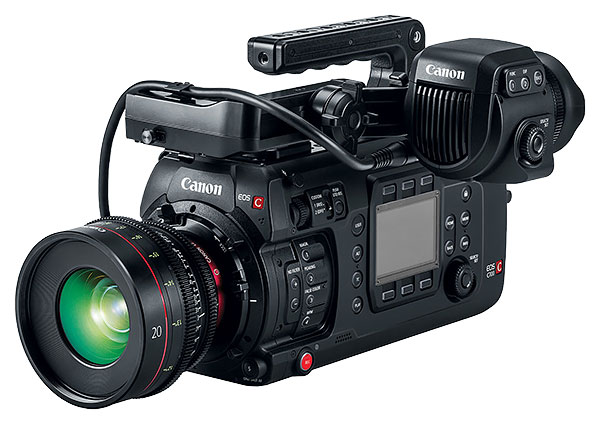
KO: Cinema EOS is one of the growth strategies too. As you are aware, since we launched the 5D II, we had lots of feedback from the market, and we listened very carefully to that feedback, then made the Cinema EOS series. So that is a huge asset for Canon, that originated from the US market. So why should we not strengthen that new area too, right, particularly for the lens? So optics, that is the biggest advantage of Canon compared to the others. So lenses, optics, miniaturizing technologies, lighter weight technologies and so on, that is the differentiator.
DE: Yes, you played to your strengths there. And in the case of the cinema line, that was a big investment but now it's returning dividends. I think you're doing very, very well in that business. You probably can't comment with any detail, but I'm curious, comparing cinema to still photography, how large are they? How big is cinema?
KO: Well still photography is bigger, but now filmmakers are using the 5D, right? So that's why a mirrorless is also in this category, as a so-called B-camera, not the A-camera. But in the B-camera category, they're using the mirrorless instead of our DSLRs. So now, the trend is more to the downsizing, because financially, with Netflix and so on, they're totally changing the business. Before, the three biggest networks, ABC, CBS and NBC, that is the majority of video or movie shooting, but now there are tons of productions in this country. There has been a lot of downsizing, because the advertisement income is getting less in general, so that's kind of a tendency. So downsizing is kind of a trend, but thanks to the 5D series, they have to invest less compared to the previous technologies. Am I right?
DE: Yeah. That's interesting; I hadn't thought about that, but that's a big trend. I mean, you know, between Amazon and Netflix and now even Apple, they're all making huge numbers of productions, and it seems the budget for those has to be much lower than in the past. They're spending enormous amounts of money, but they're cranking out a crazy number of shows. So they need a lot more inexpensive cameras like a 5D II or III.
KO: Compared to the previous machines, still not cheap enough, but they used to be hundred thousand dollars or ten thousand dollar machines in the past, but now...
DE: Now, just a few thousand. Yeah, I remember early on someone at Canon explained to me that Canon SLRs are the cameras that are on cars that are being crashed during shoots, and things like that. "Disposable!"
KO: Yes, crashed, disposable! <laughs>
DE: I said it's great when your customer considers one of your flagship cameras as disposable!
KO: So now it's "30 cameras, how much?" But compared to the previous units...
DE: Yeah, right. So they could buy 30 SLR cameras or even Canon cinema cameras, compared to one of the monster ones before.
KO: So that's kind of a shooting habit, a style.
DE: So it seems like that market, you say it's becoming more constrained, the advertising is tighter and tighter. But at the same time you have these large capital-driven companies like Netflix and Amazon, so there's a huge volume... I suspect there's much more production overall happening now than ever, probably.
KO: Right, so I need to check more, but the much smaller-size production houses are increasing. The number of production houses is increasing. It used to be that the bigger players were dominant in the market, but now due to financial constraints, they ask the smaller groups, small independent companies]. So in reality, while there is downsizing, the opportunity for us is bigger.
DE: Yeah, downsizing but also increased opportunity for Canon. And also, that would feed back positively to the photography business, because they're many of the same elements there, some of the same lenses. That's great. Ah, I think we're probably out of time, aren't we?
KO: Yes, thank you.
DE: Thank you for your time!
Summary
Phew, that's a lot to sum up!
I think the biggest takeaway is that Canon's committed to a "full-line" strategy, meaning that they aren't retreating from entry-level, high-end pro models or any segment in between. (Not just in this interview, but for the entire 3-day event, I can't count the number of times I heard "full-line strategy" :-)
While Ogawa-san did acknowledge that mirrorless is clearly the growth area these days, he was very clear that DSLR development and EF-mount development will continue unabated.
It's also clear that the EOS-R is just the first of a series; I expect we'll see models coming both above and below it in functionality and price, although Ogawa obviously couldn't comment directly on any of that.
It's perhaps what you'd expect, but Ogawa-san seemed genuinely upbeat about the prospects for growth in the photo arena, pointing to the massive increase in the number of people involved with photography and the photos taken. While it's true that smartphones have supplanted cameras in most people's lives, I think it's a valid point that they're also responsible for bringing a lot of people into photography, from which the next generation of enthusiasts is springing.
(Also interesting was the extent to which Ogawa acknowledged the positive impact of other companies. Speaking personally, I feel that Sony in particular deserves a lot credit for driving the broad awareness of mirrorless technology.)
I asked a lot about Canon's larger corporate strategy, because it's been my feeling for a while that investments in new areas like medical and printing (and to an extent cine as well) drew R&D resources away from Canon's mainline camera business. (In particular, I've wondered where Canon's underlying sensor technology might be now, if the money that went into their medical investments had instead gone into sensor development.)
Ogawa-san unsurprisingly wouldn't admit that there had been any negative consequence for Canon's photography tech, and pointed several times to the enormous amount Canon, Inc invests in R&D: Their standard R&D budget has been 9% of revenue for decades now. According to statistics from the National Science Foundation, that's almost 3x the average for large companies. He also noted that as new companies came into the Canon corporate fold (like Toshiba Medical and Axis Communications, to name just two), they brought more revenue with them, so were to some extent paying for R&D in their own areas - and there's a good bit of synergy to be found, in that tech developed in one sector often feeds back into others.
That said, I still feel that Canon's photo-related R&D took a hit when Canon was investing in new businesses and trying to grow them.
The good news, though, is that many of those businesses are now paying off, some handsomely. As far as I know, Canon doesn't break out financial results for their various divisions, but my sense is that Medical is at least carrying their own weight these days, printing technology is being a huge success, and Canon's cine products are racking up big sales. Specifically within the photo-related area, their cine lens line is pretty fully built-out now, so the resources consumed by that can now be turned to fleshing-out the R-mount line, as well as continuing to update their EF products to the latest technology.
Certainly, looking at Canon's overall corporate financials, with operating profit and net income up substantially year over year, they should certainly have the resources to invest in photography if they choose. (Net income is projected to be up nearly 16%, with only a 1% increase in sales volume.) Looking back over the last few years, 2015 was down slightly and 2016 seems like it was pretty rough, but 2017 was strong, and as noted 2018 is looking even more so. (In fact, 2018 is on track to be the most profitable year for the company since 2008.)
So this seems like good news for us in the photo world. With some of the other demands on their R&D budget seemingly relaxing a little, and given the amount of time it's been since we last saw a new full-frame sensor, I'm optimistic about what the future holds. Canon has committed to a pretty rapid build-out of native R-mount lenses, their existing EF glass seems to work quite well with the new EOS-R, and as I just said, I'm strongly expecting to see some new sensor tech from Canon soon-ish (maybe in 2019?).
Also good news is the extent to which Ogawa-san pointed to photography as Canon's "brand ambassador". It's one of if not the largest business activity for them, but beyond that, it brings them a lot of brand equity and mind share even in business sectors far removed from photography. The level of pride they have in their photo products bodes well for their long-term commitment and dedication to the sector.
Of course, we'll see, time will tell, etc, etc. Canon clearly has the technical resources and deep pockets to do almost whatever they want in photography; it's just a question of where they plan on spending those resources, and the extent to which it will be in photography. So stay tuned, I guess :-)
This was a looong discussion, with a lot of it covering topics far outside the photography realm, but I came away with a much better sense of what Canon's direction and plans are, and some reassurance that the company as a whole has the resources to innovate and continue to compete in the rapidly-evolving photo market. And the unprecedented pressure they're feeling from their competition will certainly spur them to do so.
Let us know your thoughts below as well;, I'm interested to hear what you our readers think about this sort of less-technical, more business-oriented interview, and your own take on Canon's prospects.
